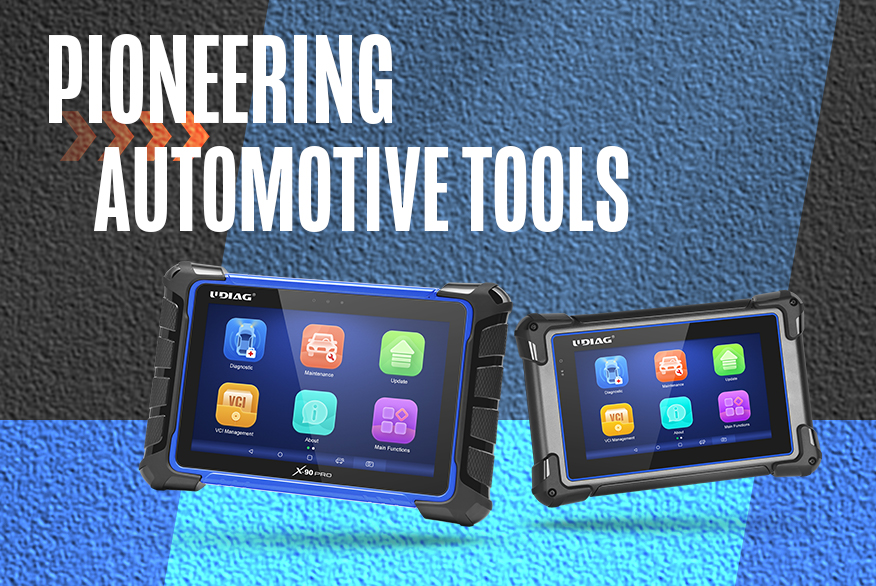Do diagnostic tools work when an engine won’t start?
2024-08-27 by UDIAG
In the modern automotive world, diagnostic tools have become indispensable for both professional mechanics and car enthusiasts. These devices are designed to communicate with a vehicle’s onboard computer system, known as the Engine Control Unit (ECU), to identify and troubleshoot various issues. Among the most common and frustrating problems drivers encounter is when an engine refuses to start. Diagnosing the cause of a no-start condition can be complex, and this is where diagnostic tools come into play. But do they work effectively when the engine won’t start? This essay explores the capabilities and limitations of diagnostic tools in addressing engine start issues.

I. Understanding Engine Start Issues
When an engine fails to start, several factors could be at play. The first step in troubleshooting is understanding the common reasons behind no-start conditions:
- Battery Problems: A dead or weak battery is often the most straightforward cause of an engine not starting. Without sufficient power, the engine cannot turn over.
- Fuel System Issues: A lack of fuel, clogged fuel injectors, or a malfunctioning fuel pump can prevent the engine from getting the necessary fuel mixture for combustion.
- Ignition System Failures: Faulty spark plugs, ignition coils, or a malfunctioning ignition switch can stop the engine from igniting the air-fuel mixture.
- Starter Motor Issues: The starter motor is responsible for turning the engine over. If it’s defective, the engine won’t start.
- Sensor and ECU Malfunctions: Modern vehicles rely on numerous sensors that feed data to the ECU. If critical sensors like the crankshaft position sensor fail, the ECU may prevent the engine from starting.
Identifying the root cause of these issues is crucial, and diagnostic tools are often the first line of defense in this process.
II. How Diagnostic Tools Work
Diagnostic tools, particularly On-Board Diagnostics (OBD-II) scanners, are designed to interface with a vehicle’s ECU. They serve several key functions:
- Reading Trouble Codes (DTCs): Diagnostic tools can retrieve stored Diagnostic Trouble Codes (DTCs) from the ECU. These codes correspond to specific issues, offering a starting point for troubleshooting.
- Monitoring Live Data: These tools can display real-time data from various sensors, allowing technicians to observe how the vehicle’s systems are functioning.
- Performing System Tests and Diagnostics: Some advanced diagnostic tools can perform active tests, such as commanding the fuel pump to run or triggering spark plugs, to test individual components.
By connecting to the vehicle’s OBD-II port, these tools can quickly assess the health of the vehicle’s systems, making them invaluable in diagnosing start-up issues.
III. Using Diagnostic Tools When the Engine Won’t Start
A. Checking for Stored Trouble Codes
When an engine won’t start, one of the first steps is to check for stored DTCs using a diagnostic tool. The ECU often stores codes related to problems that could prevent the engine from starting. For example, a P0335 code might indicate a malfunctioning crankshaft position sensor, which is critical for engine timing and operation.
B. Analyzing Live Data
In cases where no DTCs are present, or the codes do not point to a clear issue, live data can be analyzed. Diagnostic tools allow the user to monitor real-time information from sensors such as the crankshaft position sensor, fuel pressure, and ignition timing. If any of these values are out of the expected range, it can indicate the underlying issue. For example, if the fuel pressure is low during cranking, the problem could lie in the fuel pump or fuel delivery system.
C. Performing Active Tests
Advanced diagnostic tools offer the ability to perform active tests, which can be crucial in diagnosing no-start conditions. For instance, the tool can be used to manually trigger the fuel pump or ignition coils. If the engine starts or shows signs of starting during these tests, the problem may be traced back to a specific component, such as a relay or sensor.
D. Limitations of Diagnostic Tools
While diagnostic tools are powerful, they are not foolproof. Some issues, particularly mechanical ones, may not trigger a DTC or be detectable through live data. For example, a broken timing belt won’t necessarily cause the ECU to store a code, yet it will prevent the engine from starting. Additionally, electrical issues such as corroded connectors or damaged wiring might not be immediately apparent through diagnostics alone. In these cases, manual inspection and testing are required to identify the problem.
IV. Case Studies
To illustrate the effectiveness of diagnostic tools, consider a scenario where a car refuses to start, and the diagnostic tool reveals a P0335 code. The code points to a crankshaft position sensor failure, a common cause of no-start conditions. Replacing the sensor resolves the issue, demonstrating the diagnostic tool’s utility.
In another case, a car fails to start, but no DTCs are stored. By analyzing live data, the technician notices that the fuel pressure is significantly lower than expected. Further investigation reveals a clogged fuel filter, which is replaced to restore normal engine function. Here, the diagnostic tool provided critical data that led to a successful diagnosis.
V. When Diagnostic Tools May Not Be Enough
Despite their capabilities, diagnostic tools are not a cure-all. Certain situations require additional inspection and testing. For example, if the engine cranks but doesn’t start, and the diagnostic tool shows no apparent issues, a physical inspection of components like the timing belt, starter motor, or fuel lines may be necessary. Moreover, while diagnostic tools can point to potential problems, interpreting the data correctly requires a solid understanding of automotive systems. For this reason, working with a professional mechanic who has both the tools and the expertise is often the best approach.
Conclusion
In conclusion, diagnostic tools are incredibly useful for diagnosing engine start issues, offering insights through DTCs, live data, and active tests. However, they do have limitations and may not always provide a definitive answer. The most effective approach to diagnosing no-start conditions combines the use of diagnostic tools with manual inspection and a strong understanding of vehicle systems. By leveraging both technology and hands-on experience, technicians can accurately identify and resolve the root causes of engine start problems.
FAQs
Q1: What is the first step to take if my engine won’t start?
The first step is to check the basics: ensure your battery is charged, your fuel tank is not empty, and your ignition system is functioning properly. After verifying these, you can use a diagnostic tool to check for stored Diagnostic Trouble Codes (DTCs) that may point to the issue.
Q2: Can a diagnostic tool detect a dead battery?
While a diagnostic tool may not directly indicate a dead battery, it can show related symptoms such as low voltage readings. However, using a multimeter to check the battery voltage is a more direct method of diagnosing battery issues.
Q3: Will a diagnostic tool work if the engine won’t start at all?
Yes, diagnostic tools can still retrieve trouble codes and monitor live data even if the engine won’t start. The tool connects to the vehicle’s ECU through the OBD-II port, which is powered by the car’s battery, not the running engine.
Q4: What kinds of codes should I look for if my engine won’t start?
Common codes related to no-start conditions include those for the crankshaft position sensor (e.g., P0335), fuel system issues (e.g., P0087), and ignition system failures (e.g., P0350). These codes can help pinpoint the issue.
Q5: Can a diagnostic tool fix the problem, or does it just identify it?
A diagnostic tool is designed to identify problems, not fix them. It can help you understand what might be wrong by providing trouble codes and data. Fixing the issue requires repairing or replacing the faulty components identified by the diagnostic tool.


